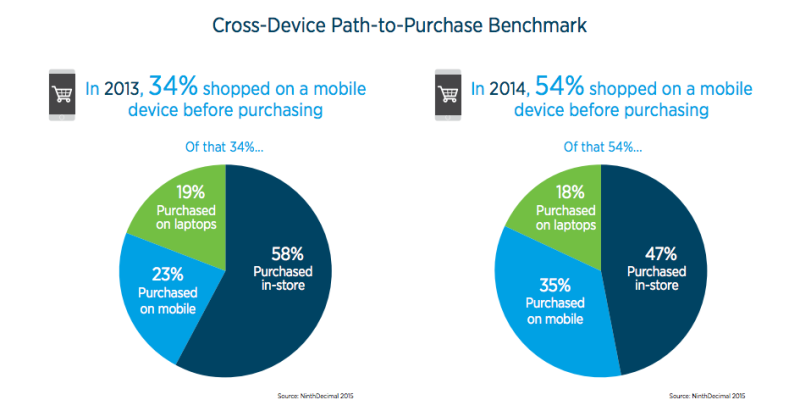Report: Mobile Ads Drove 80 Percent Increase In Store Visits Within 24 Hours
- Fahad H

- Jun 8, 2015
- 2 min read

Between smartphones and tablets, mobile devices now play a larger role in product and brand discovery than laptops. According to a new “Mobile Audience Insights Report” from NinthDecimal 54 percent of consumers in 2014 “shopped on a mobile device over a laptop before making a purchase” and 34 percent “preferred to use a smartphone over a tablet or laptop.”
In the context of the waves of data coming out, these findings, which are a mix of behavioral and survey data, shouldn’t surprise anyone. However it remains the case that mobile marketing efforts (and budgets) still don’t reflect the reality of consumer behavior in the market.
In terms of cross-device shopping and buying, NinthDecimal found that the share of mobile commerce purchases grew at the expense of in-store buying, while the PC share remained flat. One interesting thing to understand, not published in the report, would be the location of these mobile buys (was there a pattern? did they occur at home, in stores, elsewhere?).

In addition, NinthDecimal found that in-store visits increased 80 percent within 24 hours of mobile ad exposure and stayed above average store-visitation benchmarks for the following six days. We don’t know much about the specific ad creative generating these visits. It appears however that they’re mostly offer-based ads (see bottom chart below).
One of the most interesting sets of findings in the report involves an analysis of ad performance in relation to store proximity. Here it appears performance is measured by CTR, which is a questionable mobile metric for ultimate performance. Nonetheless it can be a directional indicator of intent.
What the chart below indicates is that there are different optimal ad-exposure distances by vertical. Retail mobile ads performed best when served between zero and five miles from the store location. CPG ads did best within two miles of a store location. QSR-related mobile ads performed well much farther out, up to twenty five miles from the designated location.

These data point to some emerging best practices in geofenced or location-based mobile advertising. NinthDecimal also does demographic and behavioral audience targeting and segmentation in addition to proximity based targeting. It’s not clear how or whether audience targeting played in the response rates above.
As indicated, the following data do provide some insight and perspective into the types of campaigns being deployed by various industries and verticals using the NinthDecimal platform.

While cross-device marketing is now critical, these findings add to the growing body of consumer research that argue strongly most marketers need to rethink and reprioritize their digital media spending to favor mobile over the PC.








Comments